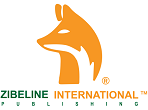EMISSION DUE TO MOTOR GASOLINE FUEL IN RECIPROCATING LYCOMING O-320 ENGINE IN COMPARISON TO AVIATION GASOLINE FUEL
ABSTRACT
EMISSION DUE TO MOTOR GASOLINE FUEL IN RECIPROCATING LYCOMING O-320 ENGINE IN COMPARISON TO AVIATION GASOLINE FUEL
Journal: Environment & Ecosystem Science (EES)
Author: Yunenthiran Rajendran, Prof Dr Rahmat Mohsin
This is an open access article distributed under the Creative Commons Attribution License, which permits unrestricted use, distribution, and reproduction in any medium, provided the original work is properly cited
DOI: 10.26480/ees.02.2018.20.24
 Piston-powered aircrafts rely on 100 low lead (100LL) Aviation Gasoline (AVGAS) for safe operation. AVGAS has high levels of Tetraethyl Lead (TEL). TEL is an additive which is added in aviation fuels to assist in anti-knocking. The main reason for continuation of TEL as an additive in AVGAS is because aircraft engines are prone to engines knock when operate at higher power settings and temperatures. TetraEthyl Lead (TEL) or Plumbum (Pb), which is the additive of AVGAS, for octane boosting and valve recession avoidance, can cause serious health impacts. One of the possible technique to eliminate the effect of Pb emissions caused by general aviation was to make unleaded Motor Gasoline (MOGAS) accessible as another option to leaded AVGAS for the use in reciprocating aviation engines. The unleaded MOGAS has relatively lower octane rating compared to leaded AVGAS. Due to knocking and engine parameter performance, utilization of a fuel with too low of an octane rating is a risk. Besides, numerous gasses are produced as by product of combustion as a result of emission from aviation engines. In this study, a full scale engine emission due to locally available unleaded MOGAS fuels are determined and compared to the typical leaded AVGAS used. This ground level emission tests are performed by evaluating different fuels on emissions from a full scale Lycoming O-320-B2A reciprocating engine. The fuels to be tested in this study are 100 LL AVGAS, RON100 MOGAS, RON97 MOGAS, and RON95 MOGAS. Each of this fuel is tested at a time in Lycoming O-320-B2A reciprocating engine and the data for emission of of exhaust gases CO, NOx and HC, were measured by an emission analyser (EMS 5002) and recorded. Although the emission of both AVGAS and MOGAS are moreover the same it is expected that that MOGAS burns cleanly and minimal combustion chamber deposits are produced in the engine.
Piston-powered aircrafts rely on 100 low lead (100LL) Aviation Gasoline (AVGAS) for safe operation. AVGAS has high levels of Tetraethyl Lead (TEL). TEL is an additive which is added in aviation fuels to assist in anti-knocking. The main reason for continuation of TEL as an additive in AVGAS is because aircraft engines are prone to engines knock when operate at higher power settings and temperatures. TetraEthyl Lead (TEL) or Plumbum (Pb), which is the additive of AVGAS, for octane boosting and valve recession avoidance, can cause serious health impacts. One of the possible technique to eliminate the effect of Pb emissions caused by general aviation was to make unleaded Motor Gasoline (MOGAS) accessible as another option to leaded AVGAS for the use in reciprocating aviation engines. The unleaded MOGAS has relatively lower octane rating compared to leaded AVGAS. Due to knocking and engine parameter performance, utilization of a fuel with too low of an octane rating is a risk. Besides, numerous gasses are produced as by product of combustion as a result of emission from aviation engines. In this study, a full scale engine emission due to locally available unleaded MOGAS fuels are determined and compared to the typical leaded AVGAS used. This ground level emission tests are performed by evaluating different fuels on emissions from a full scale Lycoming O-320-B2A reciprocating engine. The fuels to be tested in this study are 100 LL AVGAS, RON100 MOGAS, RON97 MOGAS, and RON95 MOGAS. Each of this fuel is tested at a time in Lycoming O-320-B2A reciprocating engine and the data for emission of of exhaust gases CO, NOx and HC, were measured by an emission analyser (EMS 5002) and recorded. Although the emission of both AVGAS and MOGAS are moreover the same it is expected that that MOGAS burns cleanly and minimal combustion chamber deposits are produced in the engine.| Pages | 20-24 |
| Year | 2018 |
| Issue | 2 |
| Volume | 2 |
[button size=”extralargebold” subtitle=”Download” style=”orange” align=”” dp_animation=”bounceInUp” linktarget=”_blank” icon=”Default-file-pdf-o” link=”https://zibelinepub.com/archives/2ees2018/2ees2018-20-24.pdf”]PDF File[/button]
[button size=”extralargebold” subtitle=”Download” style=”green” align=”” dp_animation=”bounceInUp” linktarget=”_blank” icon=”Default-file-code-o” link=”https://zibelinepub.com/xml/2ees2018/2ees2018-20-24.xml”]XMLFile[/button]
Recent Posts

